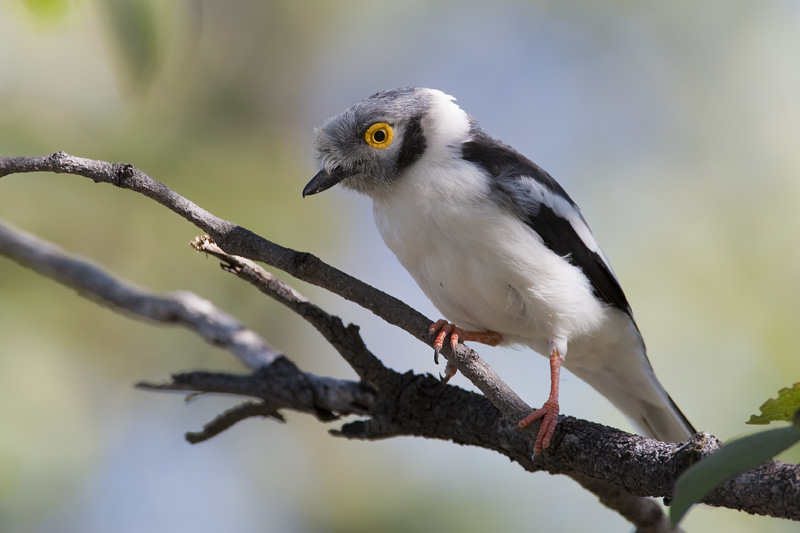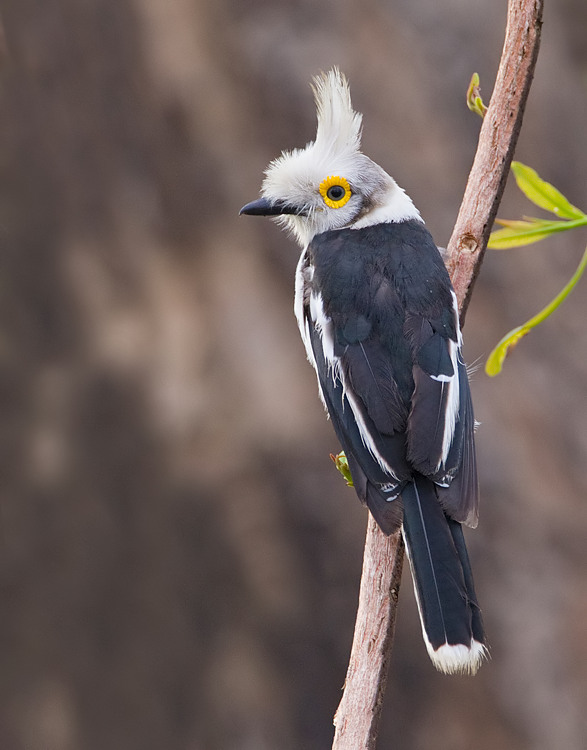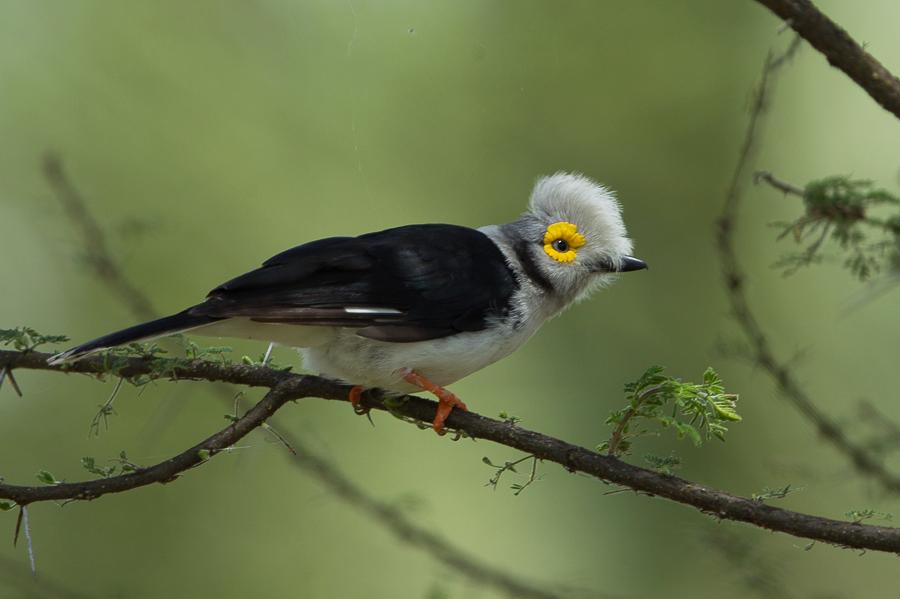
Prionops plumatus
SUBFAMILY
Prionopinae
TAXONOMY
Prionops plumata Shaw, 1809, Senegal. Up to nine races described.
Variation affects size, amount of white in wings, and
characteristics of frontal feathers and crest.
OTHER COMMON NAMES
English: White-crested helmet-shrike, curly-crested helmetshrike;
French: Bagadais casquй German: Brillenwьrger; Spanish:
Alcaudуn de Copete Yelcobй.
PHYSICAL CHARACTERISTICS
7.4–9.8 in (19–25 cm); 0.88–1.3 oz (25–37 g). A relatively large
species; sexes similar. Mainly black on upperparts, but with
white wing-stripe; wholly white on underparts; head whitish
with stiff frontal feathers and long, straight crest; eyes yellow
surrounded by yellow wattle. In flight, obvious white patch in
wings and white outer feathers in tail. Juveniles are similar, but
duller, with no crest and no wattle. Race cristatus (Ethiopia) has
no white in the wings and its long crest curls forward. Race talacoma
(parts of eastern and southern Africa) shows a grayish
head and has no long crest.
DISTRIBUTION
Most common and widespread helmet-shrike, exclusively in
sub-Saharan Africa. Absent from some parts of south, centralwestern
and eastern Africa.
HABITAT
Woodlands and wooded savannas, sometimes in suburban gardens
outside breeding season. Occurs up to 5,900 ft (1,800 m)
in Kenya.
BEHAVIOR
Highly gregarious in all seasons. A given group generally numbers
up to seven birds, but up to 22 have been recorded together
outside the breeding season. The group defends a home
range covering about 50 acres (20 ha) (10–75 acres [5–30 ha]).
When searching food, birds fly from tree to tree and may be
seen anywhere between ground and canopy. Local movements
are known, but not yet fully understood; they appear to be favored
by drought years.
FEEDING ECOLOGY AND DIET
All kinds of arthropods, mainly insects and particularly butterflies
and moths, as well as their caterpillars. Small reptiles are
sometimes taken.
REPRODUCTIVE BIOLOGY
Monogamous cooperative breeder. Only one dominant pair
breeds and is assisted by what are thought to be closely related
birds. Over the vast breeding area, egg-laying may occur almost
in any month. Lays two to five eggs, most often four, in
a cup-shaped nest made of bark that is cemented and decorated
with spider web. It is placed a few yards (meters) above
the ground in a tree. Incubation done by all the birds, but
probably mostly by the dominant pair, for about 18 days.
Young stay in the nest about 20 days; they are still fed by the
group when about two months old.
CONSERVATION STATUS
Not threatened.
SIGNIFICANCE TO HUMANS
None known.
Other popular Animals
Photo Gallery of - White helmet-shrike




 Animalia Life
Animalia Life